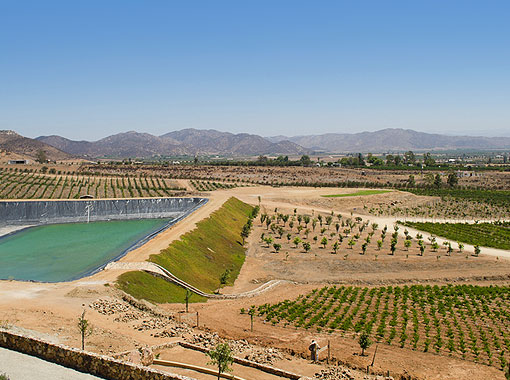Mexican Vineyards on Uptick

Mexican Wine: Grapes Worth Crushing On
Most people visiting Mexico are fluent in least a couple of words frequently used by the locals: cerveza and tequila. But what happens when your meal of choice doesn’t quite pair with the sudsy brews and potent potions available? Well, my friend, maybe it’s time to add the word vino to your vocabulary. You’ll be glad you did.
Kept in the Cellar Early On
“I think Mexican wine is not as popular as it should be due to its complicated story,” says Moon Palace Cancun Sommelier Eduardo Barrios, who enthusiastically studies the complexities of the country’s particular terroir. “While the Spaniards brought the first vineyards from Europe during the 16th century, they also enacted a prohibition on wine production due to the success that these ‘New World’ wines were enjoying in Spain.”
As a result, Mexico’s growing status as a bona fide player in the wine scene was stalled around 1699. The ban was lifted after the War of Independence in the early 1800’s, but further conflicts during the Revolutionary period set things back even further.

Surprising History, Even More Surprising Quality
Still, some winemakers kept producing through it all. In fact, Mexico boasts the longest-running winery in all of the Americas; Valle de Parras’ own Casa Madero has been an award-winning producer since 1597. “The only reason most of these wineries aren’t more globally renowned is because current production barely covers domestic demand,” adds Barrios. In fact, an estimated 95% of the wine produced in Mexico is consumed within its borders.
The sommelier feels a particular sense of pride when recommending Mexican varietals to visitors who ask for his insight. “It’s not the easiest sell, but once our guests try any of our domestic choices they keep coming back for more, and even ask for bottles to take back home,” he enthusiastically concludes. Further proof of the wine’s worth comes along with the price tags: The menu’s “cult” offerings like Duetto, Casa Grande Selección Barricas or Gran Ricardo are in the $100-$150 range.



Audacity and the Sea
In the end, it’s all about the taste. New World wineries tend to be more experimental and audacious when it comes to the endless search for balanced notes and bold flavors, and this relaxed approach toward the fruit of the vine captures some truly inspired blends.
Wines from Ensenada reflect a slight hint of salt due to their proximity to the sea. Monte Xanic, which produces the aforementioned Gran Ricardo, has won medals by relying on a bright and subtle blend of Cabernet Sauvignon and Merlot. And the unusual marriage of Sauvignon Blanc and Chardonnay has put the small winery of Madera 5 on the map. So don’t hesitate to expand your wine-lover horizons on your next Mexican vacation. Like Eduardo Barrios says, “At worst, you’ll be pleasantly surprised.”




